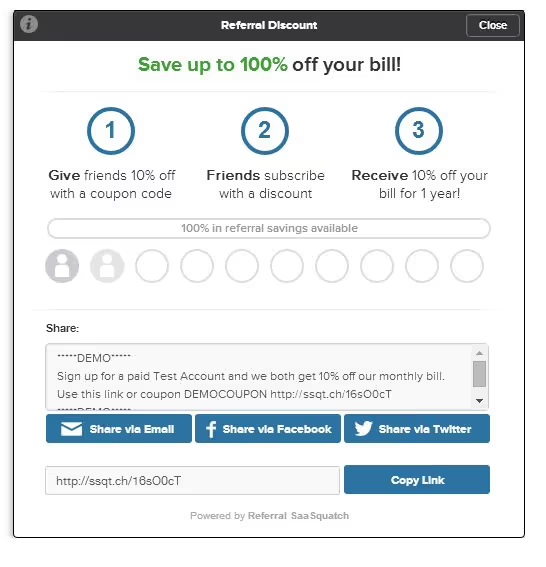Leverage Data for Customer Success
Which team has access to the best data:
Your marketing department, who struggles with anonymous visitors and incomplete prospect profiles?
Or your customer success team, who deals with your customers, has a record of prior conversations and the complete product usage data?
The answer is clear, it's your customer success team. They sit on a goldmine of data and must take advantage of it.
Effective customer success teams look very human on the surface. But in reality, behind the scenes they’re acting on a ton of data. Here are a few way to leverage your database and technology to help your customer success team reduce churn and increase revenue from your current customer base.
Setting up counters
What is it that you don’t want your customers to do?
Not using your product is probably on the top of the list. But there are possibly other behaviors that suggest poor engagement, or signals that customers are getting a bad experience. You should keep those negative behaviors or signals in check by putting a counter on them.
Whenever the behavior hits a critical number of occurrences, alert a representative that can look further into the matter and see if contacting your client would be beneficial.
Here are some ideas for counters to implement:
- Number of days without using the product
- Number of unopened emails in a row
- Number of system errors encountered using your product
Up to the limit
Another data point to keep in check is product usage, and when your customers hit a ceiling in your product package. It’s a good sign that they get a lot of value from your product.
It might also be time to upgrade to a bigger package but they may not do it on their own. This is the right time for a representative to look into the account and see how your client could take advantage of the additional features that come with the bigger plan.
Out of sight, out of mind
It is important for your company to stay top of mind, but it's even more important that your customers remember that your team is always there to help them succeed. One way to do this is to set up periodic check-ins. Depending on your product, it could be a monthly or a quarterly reminder triggering a phone call or an email on behalf of your representative, if the customer didn’t interact with your team during that period.
Each check-in should include an open ended question or a survey because it will increase the response rate and help you identify any problems down the road, before they get out of hand. The check-in email can be automated and as simple as this one:
Hey First Name, We didn’t get to chat with in a long time so I just wanted to reach out. I was wondering, what is the most useful feature for you at the moment? Also, I’d like to know if you ran into any issues. Best, Your name Company X
Better with friends
Asking for referrals is sometimes tricky because you must find the right time to ask for it. But there are many signs that your customers are ready to open their network to you:
- They use your product to the fullest and get value out of it
- They just upgraded their plan
- They just indicated a high level of satisfaction in a survey
- They submitted a positive review of your support team
A popular concept in user growth is the “Aha! moment”, the moment when a user will likely be sticking to your product. A good example is when Twitter discovered that once their users hit 30 followers, they would become active forever.
The same strategy applies at each stage of the customer journey. Find the most successful time to ask for a referral by looking at what happened right before customers previously accepted to make one.
Statistics suggests that the quicker you can respond to a happy moment, the better chances you have of getting a referral from them. So capture the moment, and use a platform like Referral SaaSquatch to trigger that offer at the right time.
Whether you manage all the above tactics using a powerful platform or multiple tools to manually sort everything out, it’s critical to listen to the signals your customers are sending. Leveraging data and technology for customer success will not only improve the performance of your team, but your customers will also be more engaged, they will stay longer on board and they will invite their friends to use your product.
 Francois Mathieu is the Inbound Marketing Manager at Uberflip, a content marketing platform that centralizes all your content, increases engagement and converts visitors into customers.
Francois Mathieu is the Inbound Marketing Manager at Uberflip, a content marketing platform that centralizes all your content, increases engagement and converts visitors into customers.
